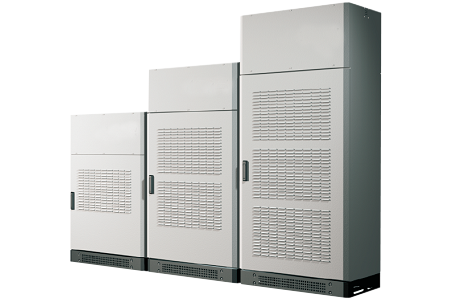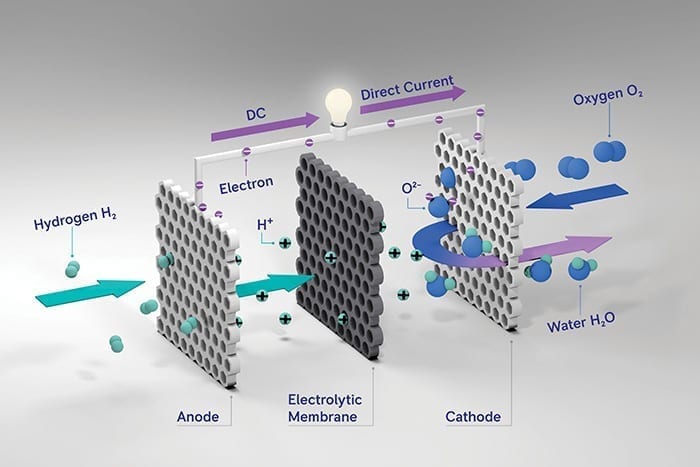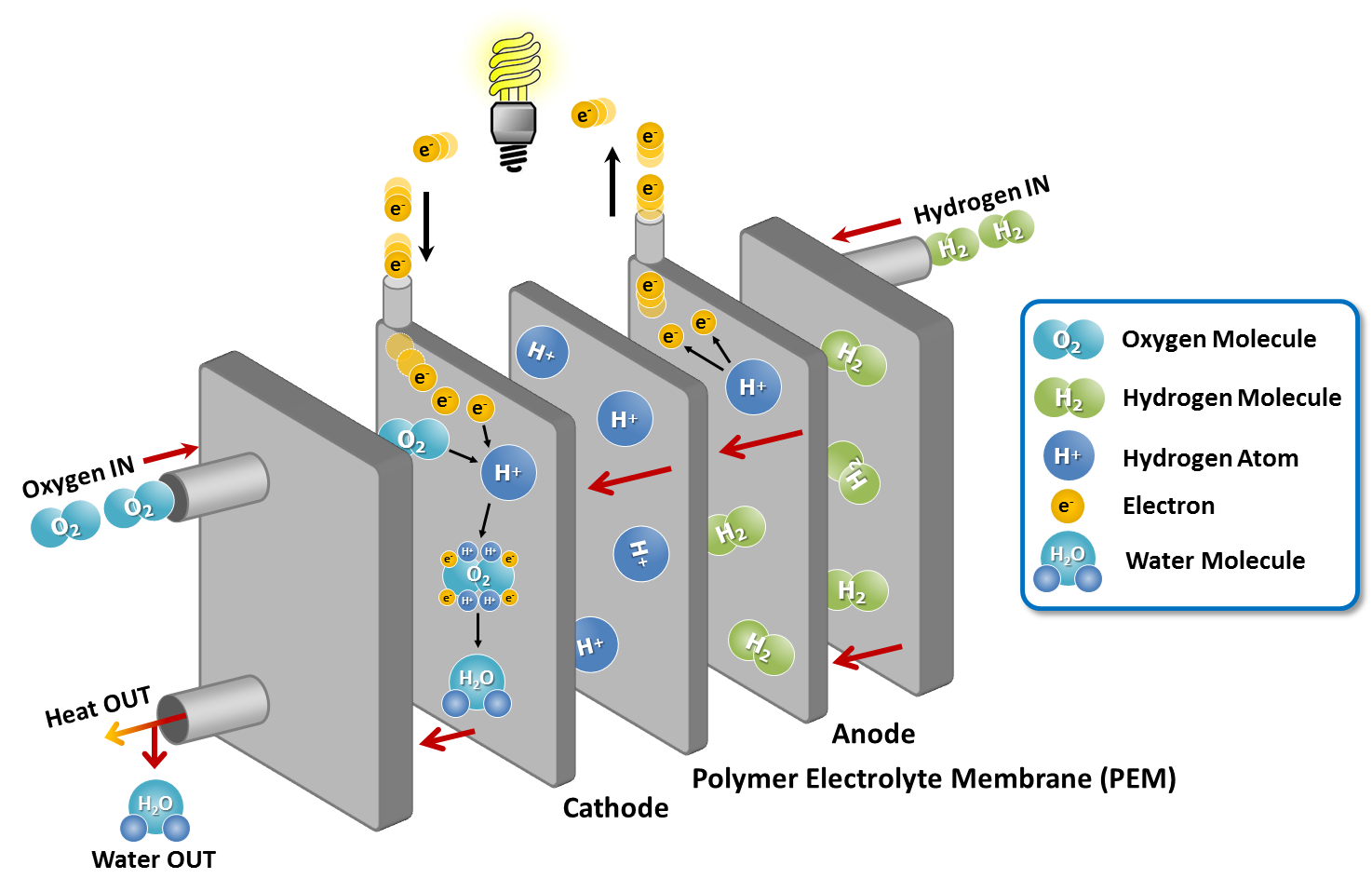Fuel Cells and Green Electricity Central Role in Green Global Economy

Our future propulsion and energy systems are designed to meet the social and technology challenges of climate change, increased energy requirements from the mass adaptation of innovative technologies as Artificial Intelligence, and the mobility and energy demands of a growing world population. Fuel cells have a central role in this biggest ever in our civilization transition to new green economy.
The growth and improvement of fuel cell technology is are being developed exponentially, as green hydrogen becomes the main energy platform in the new era of green economy. Strong arguments for using and promoting this technology are high reliability without any moving parts, scalability, and the ability to use 24/7 renewable energy sources, practically noiselessly.
HOW FUEL CELLS WORK

Fuel cells convert a fuel’s chemical energy directly into electricity without any moving parts and very silently,, which can then be used to drive a growing number of electrified systems. This conversion is much more efficient than with combustion engines, as the intermediate thermo-mechanical steps required with conventional energy converters-heat engines, are eliminated.
The greatest plus point arises when the fuel used is regeneratively produced hydrogen because it allows both pollutant and climate and human body damaging gas emissions to be totally eliminated to zero. In this way, fuel cells have the enormous potential to become the essential technology component for our propulsion and energy systems, in the era of green societies and economy.
The low-temperature fuel cell has a high power density enabling even small units to achieve sizeable outputs.
Low-temperature fuel cells have operating temperatures of up to about 100C, posing minimal hazards to both materials and people, while high-temperature fuel cells reach 250C to 1,000C. The PEM has good load-following characteristics as opposed to other types, allowing it to respond to changes of power requirement within seconds.
One advantage of the compact PEM fuel cell is its very high electrical efficiency, especially at part load. They typically run on a hydrogen fuel source; however, they can operate on a wide variety of hydrocarbon fuels (such as methanol, diesel, or natural gas). This is achieved by using well-known reforming techniques to convert the fuels into hydrogen. This gives PEM fuel cells a very wide-ranging field of applications.
The PEM fuel cell is a galvanic cell that electrochemically reacts fuel and an oxidant (usually air) to produce electricity and exhaust products (Figure 1). It works quietly and without much in the way of vibration. Similar to batteries, fuel cells also generate direct-current voltage. However, unlike batteries, fuel cells require a constant inflow of fuel and oxidant.
With a PEM fuel cell, a chemical process takes place between the electrodes (anode and cathode) in which the positive ions (protons) migrate from the anode to the cathode, and the electrons are conducted externally from the anode to the cathode via an electrical conductor. The product of this process is electrical power that can be withdrawn and used. The electrodes are coated with a platinum or palladium catalyst and separated from each other by an electrolyte. Without the catalyst, hydrogen and oxygen would not react to produce heat and electricity. The electrolyte consists of an ion-conducting membrane, and it is important for this membrane to be permeable for protons and impermeable to electrons.
FUEL CELLS APPLICATIONS
Their characteristic features mean PEM fuel cells are suited to various applications currently powered by combustion engines. Among other things, fuel cells could play a key role in zero-carbon data center, demand response, and marine propulsion systems.
Data Centers. Data centers are part of safety-critical infrastructure worldwide, including in hospitals, airports, and telecommunications centers. Many data centers use diesel gensets for emergency power. The combustion of fossil fuel (diesel) inevitably results in exhaust gas emissions. If fuel cells were used for the backup power supply, the only things given off are heat and humid spent air. The fuel cell system has no moving parts, which minimizes mechanical maintenance. Fuel cells are also more efficient than engine-based backup systems. A further advantage is that fuel cell systems can be scaled with ease. More modules mean more power, and fuel cell systems can easily be added later and grow with the data center.
Demand Response. A high degree of flexibility is required for the increasing use of renewable energy sources. When surplus wind or solar power exists, rather than curtailing production, the electricity could be used to produce hydrogen through electrolysis, which could be stored. When needed, this energy could be made available again at short notice in the form of electricity with the aid of a fuel cell system. This load management or “demand response” activity using smart grids could be one of the key factors for converting energy systems to sustainable methods of production.
A demand response solution using PEM fuel cells in combination with batteries is ideal for stabilizing grids and cushioning power peaks. Consumers can use the system to cover their requirements even when generation output from renewables is low. The PEM fuel cell generator offers the ability to be connected to locally operating systems or to microgrids.
Marine Propulsion. Alternative propulsion systems are attractive and necessary not just for cars and trucks, but also for ships. Shipping accounts for 2% to 3% of global CO2 emissions, and this proportion is set to rise significantly by 2050 with the increase in global trade. Onboard fuel cell systems combine numerous benefits. In addition to their sustainability and environmental friendliness, fuel-cell-based marine propulsion systems are gaining favor due to their high level of passenger comfort and high modularity. They are quiet, they produce no smelly exhaust gases, and they are virtually vibration-free. This emission-free propulsion system enables vessels to be used in sea, lake, and river areas, where some other systems are frowned upon due to adverse environmental impacts.
A fuel cell marine propulsion system is made up of several parts. At the heart of the system is the fuel cell, which converts hydrogen into electricity. This power is fed via the onboard electrical distribution system to large consumers, such as the electric motors driving propellers and winches, and also to the smaller “domestic” consumers. The onboard distribution system also features a power storage device, typically a lithium-ion battery, to store power temporarily. This battery permits a time lag between generation and consumption of power, thus opening up the possibility of timing the operation of individual components for maximum efficiency. This calls for a smart power management system for controlling individual components.
HYDRON HIGHLY EFFICIENT FUEL CELLS

Hydron green hydrogen autonomous reactors have compact standard sizes and can be used in permanent or temporary cases and locations, practically anywhere in the world. We design them to seize renewable green energy and store it in hydrogen through water electrolysis for any desirable time.
Our hydrogen reactors are empowered with our innovative green electrolysis process, purification and storage technology. Green hydrogen produced in Hydron autonomous reactors is at the heart of our Green Microgrids that power up houses, schools, public buildings and the exponentially growing mass market of hydrogen vehicles.
The produced green hydrogen can stay stored for very long periods and can be released on demand to match 100% the fluctuations of energy on demand of the connected communities. Hydron green autonomous reactors provide full independence from the grid, fossil fuel and other energy grids.
Hydron cloud platform in combination with our innovative Artificial Intelligence provide optimal management in green hydrogen energy production, storage and usage operations.
The production of fully green and autonomous hydrogen energy reduces humanitarian crises, as the creation of climate refugees due to extreme weather, droughts, and threats to social stability and livelihood.
Green hydrogen economy saves lives and highly powers up social and economic of our civilization.
Innovation
- Autonomy
- Compact size
- Green Electrolysis
- High PEM efficiency
- High longevity 25+ years
- Full heat, electricity and hydrogen fuel autonomy
- Portability
Green Hydrogen Reactors 2.0
Hydron 2.0 reactors synoptic specs with fully powered up green electrolysis.
| Specs | Large X | Medium M | Small S |
|---|---|---|---|
| Input Power | 50 Kw | 25 Kw | 15 Kw |
| Green Hydrogen | 1 Kg/h | 0.4 Kg/h | 0.15 Kg/h |
| Green Oxygen | TBD | TBD | TDB |


